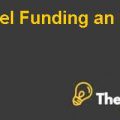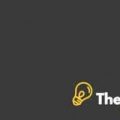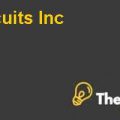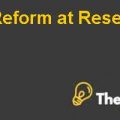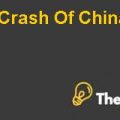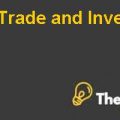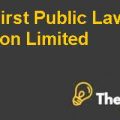
Introduction
H.J Heinz Company was a fast food giant which had diversified market operations around the globe. The company was apprehensive about the uncertainty of the performances of its Weighted Average Cost of Capital (WACC). Heinz faced the need to evaluate its weighted average cost of capital by using reasonable assumptions for the calculation. The report contains the analysis of the weighted average cost of capital with the appropriate assumptions and the performance of the Bonds yields over a specified time.
Problem Statement
In this report, the focus is on the uncertainty of the cost of capital and the lower interest rates. The financial analysts were concerned about the lower interest rates as changing the cost of capital on these interest rates would result in more reduction in the cost of capital. This reduced cost of capital caused the allocation of funds for the new projects.
Case Analysis
The analysis highlighted the influential aspects of the weighted average cost of capital, which every variable used for the calculation of WACC. The calculation was made on the assumptions which were used in WACC. The Bonds yields were also analyzed to the specified period of time. Further valuations were made for the comparison of the newly developed products and their WACCs were also calculated by using different assumptions.
Outstanding Yields:
A yield represents the rate of return estimated on bonds value if it matures at its specified life. It represents the annual rate of return of the bond for a longer period of time. Please see below the Exhibit 1 for the yields and Figure 1 for the trends of yields.
Weighted Average Cost of Capital (WACC)
Debt and equity are the sources from where capital can be raised for a firm to expand its businesses and its operations. A firm can determine its cost on total financing through cumulative average of these sources. Firm’s uses these sources to assist them in order to calculate weighted average cost of capital for further calculation of discounted cash flows.
Investors are concerned about the required rate of return on their investment and the capital growth of their investment. In light of this statement, the average rate of return is considered to be WACC. Shareholders returns vary because it depends upon the company’s operative decision and company’s profit have a portion of residual interest. Earning depends upon the WACC calculations as if company’s return is above than the average return, its share price will increase but if company earns less than the average return then; its share price will decrease. Company manages its capital structure through evaluation of weighted average cost of capital. Through this evaluation company can also predict the opportunity to expand its operations into new projects and it can also expand its existence into newly developed markets. Newly expanded project is viable if the Risk adjusted return (WACC) is greater than the expected returns, and if risk adjusted return is lower than the project then it is not viable and it will be drop immediately.
Analysis of weighted average cost of capital includes components as follows:
Fair value of Debt and Equity: Cost of Equity:
Cost of Debt: Beta Value:
Risk Free Rate and Risk Premium: Taxation:
WACC of H.J Heinz
To understand the analysis of Heinz’s WACC, calculation are made under WACC sheet in excel for the year 2009 and 2010 and it has resulted as 6.77% and 7.2% respectively. It shows the incremental result in year 2010 and it signifies that the company is incurring an additional cost to meet its capital expenditure via debt. This risk adjusted rate can also be used to evaluate the imminent performances of newly expanded operations and markets. In order to calculate the WACC for H.J. Heinz, following assumptions are made within excel:
Ω Fiscal year was assumed to end at 30- April.
Ω Risk premium of market is assumed to be an average of short and long-term period of time with lower and higher expectations.
Ω Risk free rate is assumed to be the 30 years rate of government bonds, which is higher bonds rating as perceived by conservative investors.
Ω In order to calculate the market value of equity, per share price is multiplied by the number of shares outstanding which were available at the end of fiscal year in the case data.
Ω To calculate the debt value, it is assumed that book value of debt is equal to market value of debt.
Tax rates were given in the income statement under Exhibit 1 of the case...........................
This is just a sample partial case solution. Please place the order on the website to order your own originally done case solution.



